P. C. Woodland
Transformer Language Models with LSTM-based Cross-utterance Information Representation
Feb 12, 2021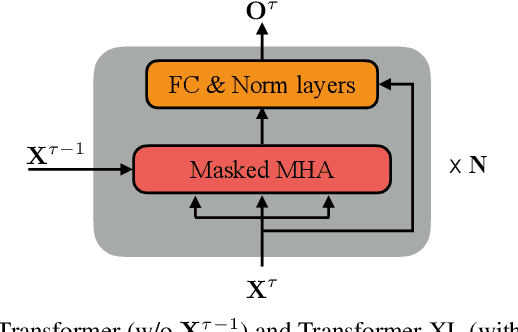
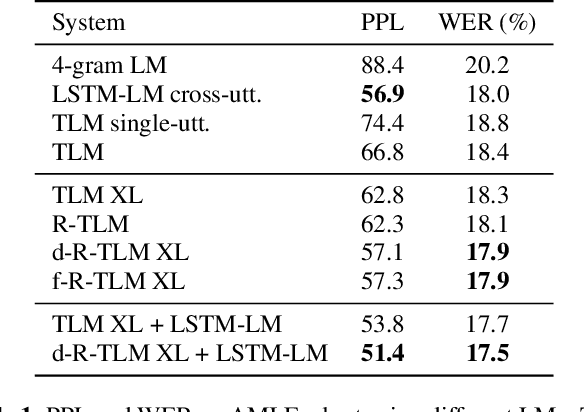
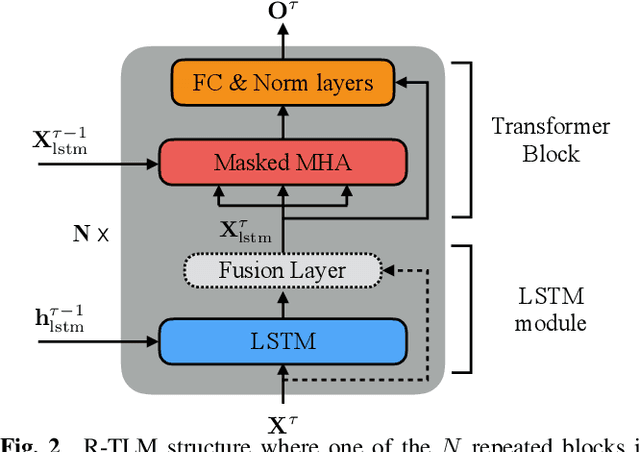
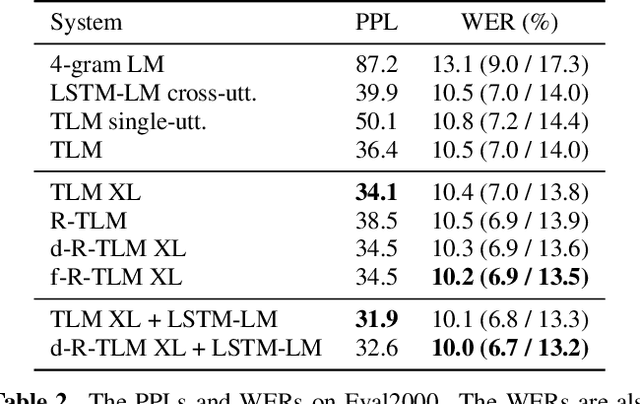
Abstract:The effective incorporation of cross-utterance information has the potential to improve language models (LMs) for automatic speech recognition (ASR). To extract more powerful and robust cross-utterance representations for the Transformer LM (TLM), this paper proposes the R-TLM which uses hidden states in a long short-term memory (LSTM) LM. To encode the cross-utterance information, the R-TLM incorporates an LSTM module together with a segment-wise recurrence in some of the Transformer blocks. In addition to the LSTM module output, a shortcut connection using a fusion layer that bypasses the LSTM module is also investigated. The proposed system was evaluated on the AMI meeting corpus, the Eval2000 and the RT03 telephone conversation evaluation sets. The best R-TLM achieved 0.9%, 0.6%, and 0.8% absolute WER reductions over the single-utterance TLM baseline, and 0.5%, 0.3%, 0.2% absolute WER reductions over a strong cross-utterance TLM baseline on the AMI evaluation set, Eval2000 and RT03 respectively. Improvements on Eval2000 and RT03 were further supported by significance tests. R-TLMs were found to have better LM scores on words where recognition errors are more likely to occur. The R-TLM WER can be further reduced by interpolation with an LSTM-LM.
Content-Aware Speaker Embeddings for Speaker Diarisation
Feb 12, 2021
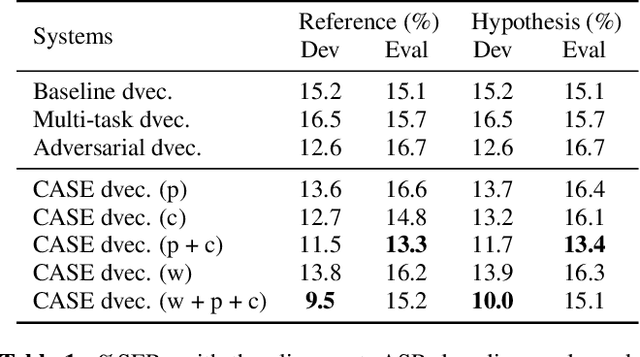
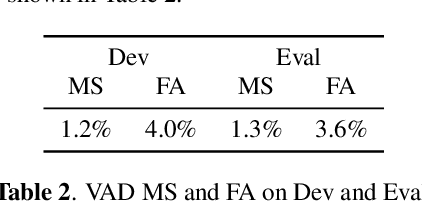

Abstract:Recent speaker diarisation systems often convert variable length speech segments into fixed-length vector representations for speaker clustering, which are known as speaker embeddings. In this paper, the content-aware speaker embeddings (CASE) approach is proposed, which extends the input of the speaker classifier to include not only acoustic features but also their corresponding speech content, via phone, character, and word embeddings. Compared to alternative methods that leverage similar information, such as multitask or adversarial training, CASE factorises automatic speech recognition (ASR) from speaker recognition to focus on modelling speaker characteristics and correlations with the corresponding content units to derive more expressive representations. CASE is evaluated for speaker re-clustering with a realistic speaker diarisation setup using the AMI meeting transcription dataset, where the content information is obtained by performing ASR based on an automatic segmentation. Experimental results showed that CASE achieved a 17.8% relative speaker error rate reduction over conventional methods.
Cross-Utterance Language Models with Acoustic Error Sampling
Aug 19, 2020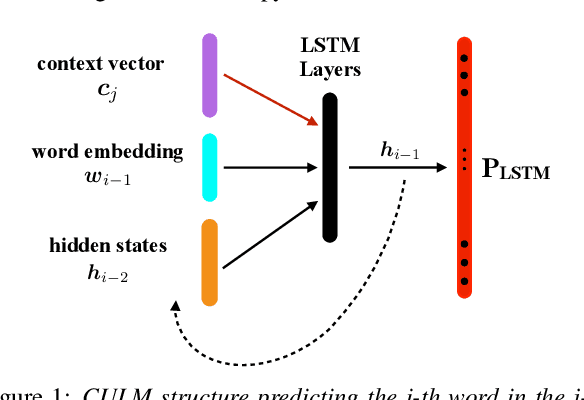

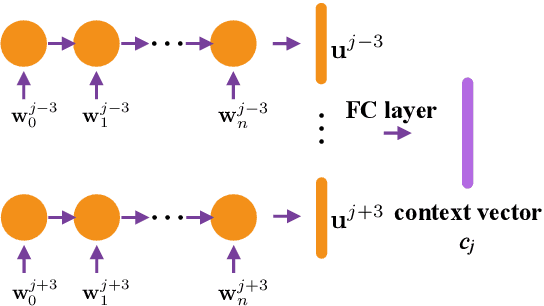

Abstract:The effective exploitation of richer contextual information in language models (LMs) is a long-standing research problem for automatic speech recognition (ASR). A cross-utterance LM (CULM) is proposed in this paper, which augments the input to a standard long short-term memory (LSTM) LM with a context vector derived from past and future utterances using an extraction network. The extraction network uses another LSTM to encode surrounding utterances into vectors which are integrated into a context vector using either a projection of LSTM final hidden states, or a multi-head self-attentive layer. In addition, an acoustic error sampling technique is proposed to reduce the mismatch between training and test-time. This is achieved by considering possible ASR errors into the model training procedure, and can therefore improve the word error rate (WER). Experiments performed on both AMI and Switchboard datasets show that CULMs outperform the LSTM LM baseline WER. In particular, the CULM with a self-attentive layer-based extraction network and acoustic error sampling achieves 0.6% absolute WER reduction on AMI, 0.3% WER reduction on the Switchboard part and 0.9% WER reduction on the Callhome part of Eval2000 test set over the respective baselines.
Combining Natural Gradient with Hessian Free Methods for Sequence Training
Oct 03, 2018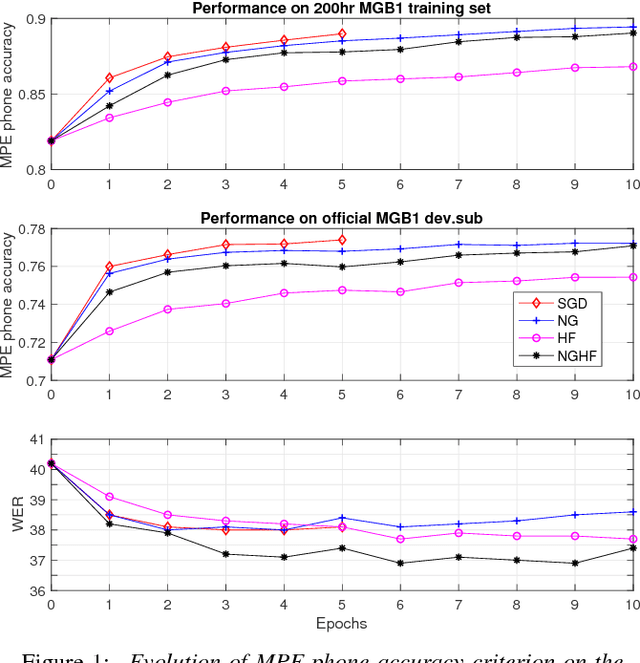
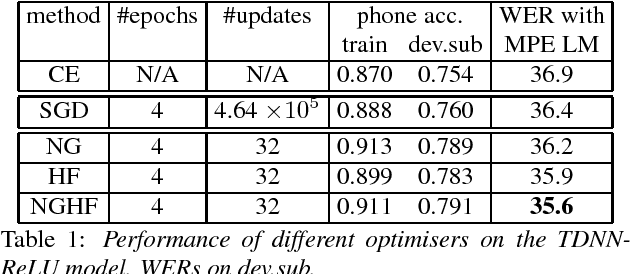
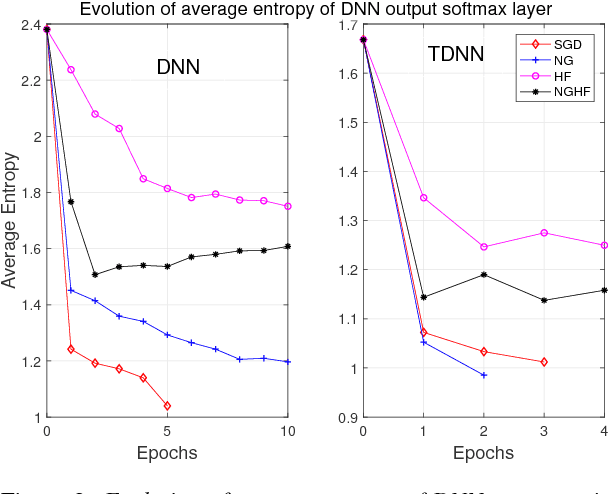
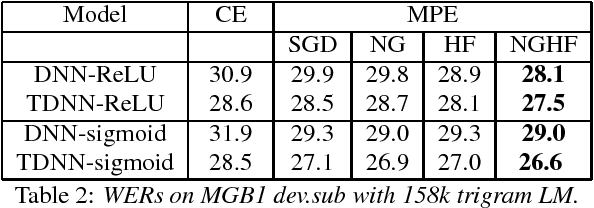
Abstract:This paper presents a new optimisation approach to train Deep Neural Networks (DNNs) with discriminative sequence criteria. At each iteration, the method combines information from the Natural Gradient (NG) direction with local curvature information of the error surface that enables better paths on the parameter manifold to be traversed. The method is derived using an alternative derivation of Taylor's theorem using the concepts of manifolds, tangent vectors and directional derivatives from the perspective of Information Geometry. The efficacy of the method is shown within a Hessian Free (HF) style optimisation framework to sequence train both standard fully-connected DNNs and Time Delay Neural Networks as speech recognition acoustic models. It is shown that for the same number of updates the proposed approach achieves larger reductions in the word error rate (WER) than both NG and HF, and also leads to a lower WER than standard stochastic gradient descent. The paper also addresses the issue of over-fitting due to mismatch between training criterion and Word Error Rate (WER) that primarily arises during sequence training of ReLU-DNN models.
 Add to Chrome
Add to Chrome Add to Firefox
Add to Firefox Add to Edge
Add to Edge